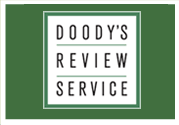The health sciences model for collection management has tended to concentrate decision-making in the duties of one experienced librarian. The disadvantage of this model is that other librarians at the institution often remain in the dark about managing collections. As collection management librarians retire or move on, who is being trained as their replacements?
To build expertise in this area at the Michigan State University Libraries, we decided to hire and train a new librarian to incrementally take on more responsibility for a clinical medicine collection, about 97 percent electronic, with a fund of around $1.7 million a year. Training would need to start from scratch, because we found that applicants for our entry-level positions in the health sciences had exposure to liaison, instruction, or educational technology, but not to collections. Specific goals of the training program were to: learn how to analyze a collection, determine user needs, budget for purchases, talk to vendors, consider electronic platforms and licensing terms, and make decisions from the individual book level up to the database or package level. More details about the training program have been published elsewhere, so here I focus on lessons learned for supervisors (
Kendall & Monosoff-Richards, 2015). My experience reflects working with two different librarians for the same training.
Lesson #1: Focus on the publisher. A key aspect of the training program that reflects 21st century concerns was a pragmatic focus on teaching a new librarian to make decisions publisher by publisher. This is particularly important for ebooks, arguably the most complicated aspect of health sciences collections today. This approach goes against the past practice of starting with core title lists for selection by subject area. I taught each new librarian that the first question to ask about any resource is, “Who publishes it?” After that, I gave them a spreadsheet to consult, listing each publisher’s electronic platforms, pricing models, and licensing concerns specific to our organization. Both new librarians said that this aspect of the training program was crucial to understanding a complicated publishing environment and beginning to achieve some purchasing independence.
Lesson #2: Make spending the goal. Budgeting was the subject most foreign to both new librarians, and supervisors will find there is no easy way to teach this. Librarians are inclined to be responsible people, and those who have never purchased for an organization before tend to be too conservative, treating an institutional collections budget like their personal budgets, where saving, rather than spending, is rewarded. I had to remind both new librarians that spending is the goal if one wants to develop collections.
Lesson #3: Leverage liaison experience. The usual health sciences collection management model notwithstanding, collections and liaison are complimentary, and a third lesson learned was that collections work without interaction with user groups is difficult. The first librarian I trained was to focus solely on collections, relying on liaison input, college websites, and usage statistics to learn about user needs. She reported that she felt somewhat removed from understanding how the materials selected would be used. A second librarian had already been working for a year as a liaison with the medical school, and she found that experience greatly informed her collections work. On the other hand, new librarians can sometimes be tempted to focus on the narrow collection needs of only the groups with which they have had the most interaction, and supervisors may need to educate them about the breadth of potential library users.
Lesson #4: Assign tasks that foster learning. I confirmed the wisdom that people learn by doing, and each collections concern that arose over the course of a fiscal year was a learning opportunity: new ebook packages were announced, faculty requested streaming videos, and journals moved from one publisher to another. There is no substitute for a supervisor passing each question along to new librarians with detailed explanations for how to take action. In the past, books have suggested training new collections librarians by having them walk the stacks. That initially seemed like an outdated idea. Many health sciences librarians reading this could probably ask, “What stacks?” During this time, however, our library initiated a large-scale stacks downsizing project to weed items and transfer even more items to an offsite facility, and collections librarians were required to review the decisions. I and the new librarian were able to make some decisions using spreadsheets, but other decisions required us to physically review items on the shelves. Ironically, despite the fact that our current collection is mostly online, the new librarian reported that this activity was one of the most helpful for getting a larger picture of the collection and understanding the nature of some of the sources that she only vaguely knew existed in electronic format.
Conclusion Both new librarians who underwent the training program significantly increased their understanding of collection management processes. After a few months, each one was able to independently choose books and ebooks, contribute to decisions about packages, and talk to vendors. Now, after a year, one librarian will continue with collections responsibilities. I still closely supervise the budgeting process, because being able to plan a year’s worth of purchases is something that comes with experience. The training continues informally, but still incorporates these four lessons.
Kendall, S. K., & Monosoff-Richards, M. (2015). Training a new librarian in the what, how, where, and why of health sciences collection management. Proceedings of the Charleston Library Conference, 147-154. doi:10.5703/1288284316246
